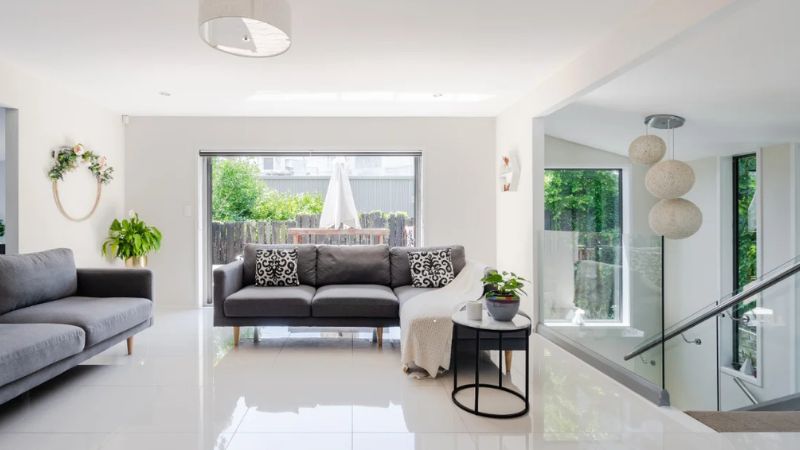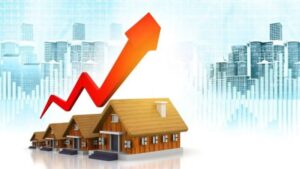Key Takeaways
- Sustainable home design balances environmental impact with personal comfort.
- Practical improvements, such as energy efficiency and renewable materials, boost property value and lower bills.
- Small changes like water-saving fixtures or solar lighting can make a big difference.
- Design choices can reflect personal style while still prioritizing eco-friendliness.
- Staying updated on trends ensures homes stay modern and future-ready.
Why Sustainable Design Matters
Sustainability in home design is becoming a priority for modern homeowners, as it benefits both people and the planet. Transitioning to environmentally responsible design involves using fewer resources, lowering utility costs, and promoting healthier living. Scarborough real estate experts The Scoville Foley Team highlight that buyers are increasingly seeking homes with sustainable features for both immediate environmental benefits and long-term value. Green building practices are becoming standard, and integrating sustainable features extends beyond new construction to reimagining existing spaces and retrofitting homes with eco-friendly upgrades.
Energy Efficiency at Home
Improving energy efficiency is a crucial first step towards a greener home. This can be achieved through insulation upgrades, LED or CFL lighting, and high-efficiency appliances. Basic window and weather stripping updates can also enhance comfort and reduce costs. Passive solar techniques can be more advanced, allowing living spaces to receive optimal sunlight and regulate temperatures naturally. These simple changes can reduce a household’s carbon footprint and appeal to environmentally conscious buyers, increasing the home’s marketability and value.
Using Renewable and Local Materials
Eco-friendly design involves using renewable and locally sourced materials like bamboo flooring, reclaimed wood beams, and recycled glass tiles. These materials have minimal environmental impact and a unique visual appeal. Opting for materials like regional stone or locally milled lumber reduces transportation emissions and supports local businesses. These materials not only weave the history of the local area into the home but also promote longevity and conservation in sustainable architecture.
Water-Smart Upgrades
The EPA WaterSense program emphasizes the importance of water-smart features in addressing increasing water system pressures. Low-flow faucets, showerheads, and dual-flush toilets can save water and money, while modest retrofits like rainwater harvesting barrels and drip irrigation systems contribute to local water resource resilience. Outdoor upgrades like xeriscaping with drought-tolerant native plants reduce supplemental watering and provide pollinator habitats.

Healthy Indoor Environments
Indoor air quality is crucial for sustainable living and not just energy and resource use. It involves reducing pollutants, improving ventilation, and controlling humidity to prevent health risks. Low-VOC paints, finishes, and furnishings are recommended. Plants can also enhance air quality and provide a sense of tranquility. Healthier indoor environments have been linked to increased productivity and better mental health, as confirmed by CDC studies.
Creative Green Space Ideas
Maximizing green space in both indoors and outdoors promotes biodiversity and emotional well-being. Urban dwellers can benefit from vertical gardens, rooftop greenscapes, and window planters, which boost oxygen levels and provide local habitats. Edible landscapes, such as patios with herbs, vegetables, or fruit trees, enhance sustainability and serve as a hobby. Pollinator patches with native flowers help conserve bee and butterfly populations.
Future-Proofing with Smart Tech
Technology is reshaping eco-friendly living by empowering homeowners to monitor and reduce resource consumption in real time. Smart thermostats and lighting systems adapt to your routines, optimize comfort, and save energy automatically. Energy management dashboards and apps provide insights for additional savings, while solar panels and battery storage solutions pave the way toward energy independence.
Incentives for green technology installations are more plentiful than ever, with local and federal programs easing the upfront investment. In many cases, these improvements increase home value and add an impressive selling point for future buyers.
Staying Inspired and Informed
Sustainable home design continues to evolve, offering new and exciting ways to live more lightly on the earth. Following thought leaders, subscribing to design magazines, and consulting reputable industry publications will keep your knowledge fresh. Government programs and regional rebates regularly announce new incentives, so staying current ensures you never miss an opportunity to enhance your home’s sustainability.
Whether you’re planning a major renovation or seeking small, impactful upgrades, every step toward sustainability is a positive one—for your household, your community, and generations to come.



